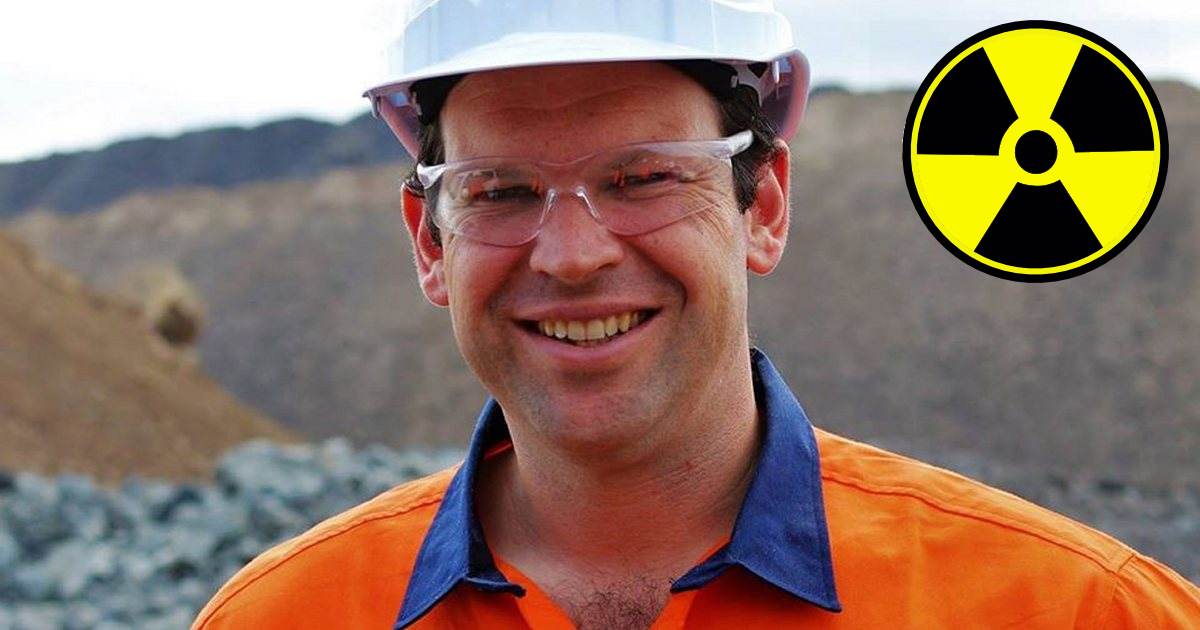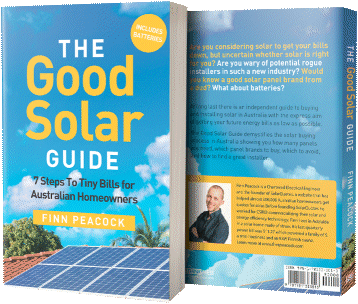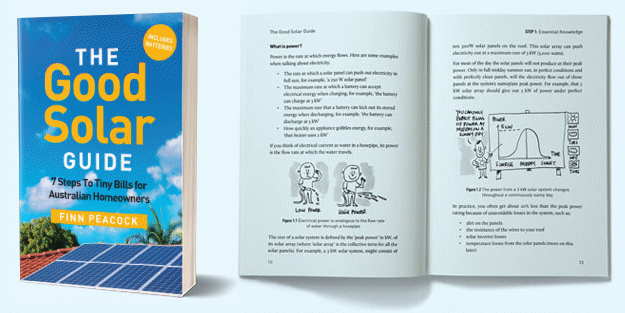
Coal power’s demise and the 10-year anniversary of the Fukushima disaster in Japan have put the nuclear energy debate in Australia in the spotlight again.
The Fukushima Daiichi nuclear disaster that began unfolding on March 11, 2011 was the most serious nuclear accident since the Chernobyl disaster in 1986. Its impacts are still felt today and will continue to into the future.
A joint statement from the Australian Conservation Foundation and the Electrical Trades Union released yesterday notes the anniversary and recognises the impact on workers and local communities exposed to radiation.
A not-so-fun fact according to the two organisations – it was Australian uranium that was fuelling the power station at the time of the disaster.
The statement says the nuclear industry poses too big a risk to human health and safety to be viable, particularly when there are safer alternatives such as renewable energy (which is cheaper too).
“Despite this reality, a small minority of pro-nuclear politicians and industry associations continue to push domestic nuclear power, in part to distract from their inaction on meaningful efforts to address climate change.”
.. and on that note …
Senator Matt Canavan: Keep Nuclear Energy On The Table
It’s probably been a disappointing week for pro-coal Senator Matt Canavan with the news Yallourn Power Station will retire in mid-2028 instead of 2032. But as well as a passion for coal, Senator Canavan is a nuclear power supporter.
In an interview with Sky News yesterday, Senator Canavan commented:
“If we’re going to shut coal-fired power stations, we need some power stations that at least can do the same job, can be on 24/7, don’t just turn up to work when they like – which is what unreliable renewables do.”
A year ago he referred to renewables as the “dole bludgers” of energy, using the same logic.
With regard to the Fukushima incident, he stated:
“The latest nuclear technology is much safer; more self-contained. Small modular reactors are effectively the size of shipping containers that are much more suited to our country and size and don’t have the same safety issues.”
He also managed to squeeze in a mention about instances of fatalities associated with installing solar panels on rooftops just for good measure.
But back to the small modular reactors (SMRs). Where are these SMRs he speaks of? The World Nuclear Industry Status Report 2020 released in September last year states:
“.. in the case of SMRs, most designs are purely theoretical ones, and no real reactors have been constructed based on that design,” state the authors. “Going by current trends, they are unlikely to ever be constructed beyond a few prototypes.”
Small modular reactors operating as terrestrial power stations are vaporware. Even if they move beyond this stage1, it’s going to be years before they can prove themselves in this role and then years again before the first one could be operating in Australia.
Among other issues, there’s the major hurdle of laws currently prohibiting the use of nuclear power for electricity generation in Australia. Nuclear energy can’t be an option “kept on the table” as it’s not even allowed to sit near it at this point.
What isn’t vaporware is wind and solar energy backed by storage and a smarter approach to energy transmission and distribution. It’s all doable right now and renewables can provide the cheapest new-build power in Australia; even with added storage and transmission costs factored in. There’s also the really nice bonus of not generating radioactive waste that will have to be carefully stored and monitored for a very long time – quite a legacy that would be left to future generations.
Far from being the dole bludgers of energy, renewables aren’t just a solution, they are *the* solution that will enable us to get to our zero-emissions energy destination quicker, cheaper and safer.
Footnotes
- Senator Canavan did eventually drop in “if they become commercial” after building up hype about SMRs ↩

 RSS - Posts
RSS - Posts



We all love nuclear power, but it is not competitive on price. Anyone promoting Small Modular Nuclear Reactors should look at the designs that are far enough along to have been costed and see they are more expensive than conventional designs per kilowatt of output. That’s not a good look. Their touted savings are supposed to come from lower cost over runs, but a promise of a reduced chance of a cost blowout is not a good reason to invest in something that’s already much more expensive than the competition.
— every still birth and every cancer
— the nuclear mob have a case to answer
I really cannot see this affordable storage that keeps getting motioned in these articles.
My Assumption is you are referring to Batteries and Pumped Hydro.
Hornsdale is the biggest battery in Australia and I don’t believe it could power Adelaide for a single night
I love the idea of pumped hydro, and if i was prime minister i would be popping a couple more Snowy 2.0’s around Australia
But from what I have read it is costing 5 billion to convert and already built Hydro dam into pumped Hydro, Building one from scratch must be getting pretty close the price of a Nuclear power plant.
Not long ago the cheapest option for replacing a coal power station was to build solar and wind capacity and build gas generation to firm the output of the renewables. But now battery storage is out competing gas on price, so it will mostly be used instead. The costs of pumped hydro have not fallen so its prospects aren’t looking good.
Battery Storage out competing Gas on price is the part I dont understand.
The biggest battery in Australia is just there to stabilize the grid, its not providing any significant storage to replace a power station keeping a city powered over night.
And judging by the articles on home batteries on this sight, they cannot pay for themselves and are extremely prone to problems and issues.
Is there maybe some project that is operating overseas that is successful?
It might make for a good article on your site as I am sure I am not the only one who cannot see these cheaper then coal, solar and storage options.
Here’s an article on how the Hornsdale Power Reserve or “Tesla Big Battery” works. Note it’s now over 4 years old.
https://www.solarquotes.com.au/blog/tesla-big-battery-first-year/
James,
You state: “Battery Storage out competing Gas on price is the part I dont understand.”
I’d suggest you read: https://reneweconomy.com.au/aemo-says-batteries-will-be-cheaper-and-cleaner-than-new-gas-plants-65524/
Also: https://www.lazard.com/perspective/levelized-cost-of-energy-and-levelized-cost-of-storage-2020/
Work has begun to construct the so-called Victorian Big Battery at a site near Geelong that will be 300MW with 450MWh storage, and is due to come into service within 12 months.
https://reneweconomy.com.au/neoen-and-tesla-get-to-work-on-australias-biggest-battery-near-geelong-26242/
And there are more, bigger BESS proposals popping up elsewhere in Australia (and overseas).
https://www.solarquotes.com.au/blog/yallourn-closure-taylor-mb1912/#comment-1002163
But that doesn’t mean better transmission links, pumped-hydro and other energy storage options don’t have a role to play.
https://reneweconomy.com.au/for-100-billion-australia-could-have-a-low-cost-and-reliable-zero-emissions-grid/
See ARENA’s commissioned report titled “Comparison of Dispatchable Renewable Electricity Options”, published 2018.
https://arena.gov.au/knowledge-bank/comparison-of-dispatchable-renewable-electricity-options/
I’m only guessing, but the timing of the Senator’s comments seem nothing but a PR attempt to counter the likelihood that large numbers of Australians, having just been reminded of the Fukushima disaster, will thus be even more ‘reluctant’ about nuclear power stations than they already are.
It’s bad enough that – as a taxpayer and a consumer – I’m already subsiding coal power stations, but now its looking as though I’ll have to subsidize nuclear power plants as well. !!!
Expecting me to now further subsidize the power bills of the opponents of ‘renewables’, along with helping pay for cleaning up an even bigger mess their policies will leave behind them seems a ‘bridge too far’ to me.
It so tiring listening to the anti-nuclear arguments; just rehashes of out of date arguments that are devoid of any sense of reason, or indeed science and engineering knowledge. There seems never an understanding, or even sense of urgency, that we are facing the most catastrophic problem that humankind has ever faced, Global Warming, so we should consider every possible method to solve it with seriousness.
Unlike solar, and wind, only truly massive nuclear power stations can supply the constant levels of power that we need, principally to replace fossil fuels with Cryo-hydrogen. You can’t do that with solar or wind alone, the task is simply too big. Nuclear waste, contrary to common knowledge, can be very effectively managed by using Generation IV reactors, which volumetrically produce vastly less waste, at hugely reduced intensity and half life, and with massive power output. The best thing for those who don’t understand the potential of nuclear should look to France; the stand out performer; over decades safely producing hardly any CO2 from its fleet of reactors, a fleet that, by the way, the French government cannot bring themselves to shut down because like Germany, CO2 production would badly spike, and stay there.
We need to decide; do we want endless production of CO2, or not?
Solar is great fun (I have a 5KW system upgrading to 7.5), so is wind, and even batteries, but they’re just not up to this overwhelming task without assistance from massive, zero CO2 power input.
And please, no more of this Fukushima stuff.
nuclear is not zero carbon.
Why do you say it is?
Lewis Tucker is on point by saying Fukujima and Chernobil are just a distraction away from the 445 other reactors safely taking out two billion tonnes of CO2 pa. The accident-free operations in Sweden, France and most other European countries never get mentioned.
Lewis Tucker,
“It so tiring listening to the anti-nuclear arguments; just rehashes of out of date arguments that are devoid of any sense of reason, or indeed science and engineering knowledge.”
Have you read the World Nuclear Industry Status Report-2022, Lewis? I’d suggest you look at:
* NUCLEAR POWER VS. RENEWABLE ENERGY DEPLOYMENT (from page 32);
* Figure 7: World Nuclear Reactor Fleet – IAEA vs WNISR 1954–2021 (page 47);
* Figure 8: Nuclear Reactors “Under Construction” in the World (as of 1 July 2022) (page 49)
* Figure 11: Delays for Units Started Up 2019–2021 (page 54)
https://www.worldnuclearreport.org/-World-Nuclear-Industry-Status-Report-2022-.html
Construction & commissioning times don’t include planning & approvals, design, procurement and site preparations. See FIG. 8: Typical durations for the main contracts, at: https://www-pub.iaea.org/MTCD/Publications/PDF/Pub1537_web.pdf
Nuclear is very slow to deploy – 10+ years (to plan, design, procure, site prepare, construct, grid connect and commission) for existing technologies by experienced countries, and 15–20 years for inexperienced countries, like Australia.
In the Hansen et. al. preprint paper titled Global Warming in the Pipeline, updated 23 May 2023 (version 3), it included Figure 25 and these statements:
https://arxiv.org/pdf/2212.04474
Prof Rockstrom: “1.5C is not a target. I call it a physical limit.”
https://www.cambridgeindependent.co.uk/news/life-on-earth-will-be-unsupportable-if-we-continue-current-p-9314798/
Nuclear is TOO SLOW to deploy to save us!
Trying to answer the question: “Can aluminium be smelted using batteries under a non-nuclear net zero protocol?” Or more generally, is it possible to stay as an industrialized nation with 100% renewables?
Tomago aluminium smelter uses 10% of NSWs consumption at 950MW. That consumption for Tomago alone would need:
950MW / 10MW or 95 very large offshore mills running Tomago SOME of the time, cost $1 – $5million/MW or from $950 million to $4.8 billion, plus
950,000kW / 1kW or 950,000 1 kW solar panels to run Tomago SOME of the day time. $2/W construction cost from Google or about $2 billion.
Or use a 60%/40% solar/wind mix. As we want all of NSW to be run off renewables, the Tomago figures above have to be multiplied by TEN. What about all of Oz?
In winter with little sun and wind in NSW, let’s assume two days and nights max. would then need a battery field the size of 950 MW or about 1GW x 2 x 24 hrs or 48 GWh of battery field?? At the moment we are looking at 200 – 400 MW battery fields max., so this seems to be impossible. Example from Google: Mornington Peninsula battery field : 240 MW for two hrs or 0.5 GWh for $190 million. 48GWh / 0.5GWh x $190 million = $18 billion!
Eraring coal-fired power station will be shut in 2025, it produces 2,950MW (Google) or close to 3GW – 25% of NSW demand. As a replacement (?) and for $600 Mio. a 460MW or 0.5GW battery will be installed, which is six times smaller and can supply 60,000 homes but for only two hours! Buy candles!
In addition we have to add to the costs the following:
Cost of renewables already spent is about $60 billion, source: “The Australian”,
Subsidies, and lots of it as corporate industry like Alcoa will lobby and will not accept high power prices and will simply march,
Stored hydro – that cost has already ballooned from $2 billion to a possible $20 billion, source: “The Australian”,